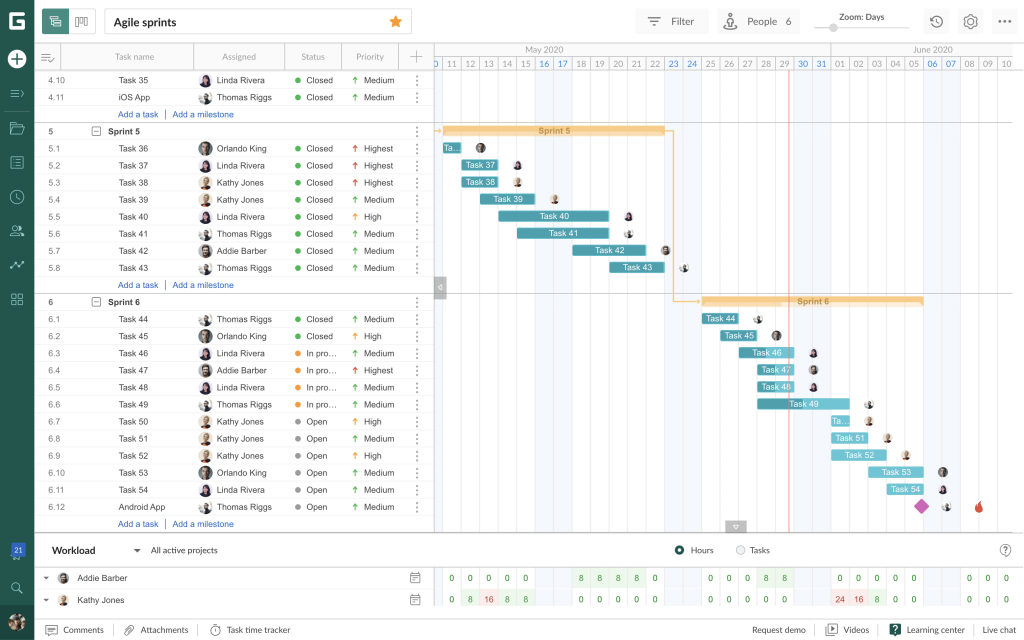5 Steps to Apply Agile Principles to Your SMB

Agile practices have found their way into different industries and lines of work, including marketing, HR, product development, and business operations in general.
This methodology was created primarily for software development, to replace the Waterfall model that was ineffective, hectic, and sluggish. Agile offered many advantages: introduced much-needed flexibility, shortened development cycles, brought about a faster product rollout and deployment, and resulted in a rapid time to market. The questions like “Why Agile?” are no longer of immediate interest.
Even tech industry giants like Google and Microsoft adopted agile principles so that they can release new and update existing software quicker and more efficiently.
Since this entire concept is highly effective and successful, it’s possible to apply Agile principles to your SMB and help it thrive.
What are the basic Agile behaviors?
This methodology is all about changing your mindset and adopting agile behaviors. That way, you will be able to transform your project management and ensure that every task is completed in a timely and adequate manner, and that the outcomes are successful.
Here are these basic procedures:
- Breaking down projects into iterations or sprints.
- Prioritizing projects and tasks and creating their backlog.
- Creating a so-called working board for these projects and tasks, and using a tool to support it.
- Organizing regular meetings, that is 15-minute daily sessions.
- Achieving velocity and efficiency without sacrificing the quality of the work.
Although there are different agile frameworks such as Kanban, Scrum, or FAST Agile, you don’t have to stick to any particular set of principles, but can use them only as a foundation.
The point is in setting short, targeted goals, being able to make adjustments early on in the process, and encouraging communication and collaboration between team members. Since this is a completely different way of running a business, career coaching might help you make this transition effortlessly.
So, here are the steps to apply Agile principles.
1. Split departments into smaller teams
Smaller, more functional teams are at the core of the agile methodology.
The reasoning behind this is obvious – smaller teams can move and make decisions faster, which means that they’re more agile than larger teams that tend to be clunkier and slower.
Hence, they’re authorized to conduct activities without waiting for approval. That’s what makes them so self-sufficient and removes the red tape from the process.
Communication, which is a crucial link for the success of every project, is streamlined. Agile breaks down the silo mentality, one of the biggest collaboration barriers, and allows team members and teams to communicate more effectively.
By adopting Agile, you’ll be able to empower every member of your team to take the initiative and leverage their unique skill sets and talents.
2. Focus on iterations
The Waterfall is famously slow, meaning that you can have a working product only at the end of the entire development cycle.
Agile solves this issue by working towards a minimum viable product and adding other features later on. This is important because it’s easier to obtain feedback both from stakeholders and potential customers early on and fix things as you go.
This methodology insists on prioritizing incremental work sequences, also known as sprints. Every phase of a project is allocated a period of time, or a sprint, during which it should be completed. Instead of a linear approach used in the waterfall methodology, in Agile, the entire team works together on the same phase simultaneously.
Another benefit of this incremental mindset is that it’s much easier to keep track and document every iteration – this will allow you to establish what worked best during the previous sprint.
Besides its efficiency and the ability to more easily identify the best practices that can be used in the future, the Agile approach allows for much better progress tracking and transparency. In other words, stakeholders are always in the loop regarding whether the deadlines are being met, as well as whether there are bottlenecks.
3. Have meetings regularly
Although this might seem like a bad idea if we bear in mind that pointless meetings cost U.S. companies almost $400 billion in 2019, regular meetings are crucial in the Agile approach.
Unlike traditional organizations that usually suffer from poorly organized meetings, Agile businesses greatly benefit from their stand-up meetings. These communication sessions take place every day but hugely differ from a traditional idea of a meeting as they’re quick, efficient, and structured more like a face-to-face conversation between team members.
The purpose of these meetings is for each team member to discuss what they accomplished the day before, what their plan for that day is, and the issues they encounter. That’s what keeps every team focused on completing their tasks and helps them overcome roadblocks.
After wrapping up every sprint, organize a team-wide meeting in which the entire cycle will be reassessed. This will allow you to make changes and improve things accordingly.
4. Use the right tools
Agile requires you to use project management tools and organize your tasks according to its principles.
These software solutions will allow you to slice your teams’ workload, streamline it, and monitor the progress easily.

Pick the one that suits your business most and make sure that every member of your team knows how to use it properly.
GanttPRO is project management software based on Gantt charts. The tool allows managers and teams from various industries organize work on tasks and projects according to Agile principles as well as other PM methodologies. Assign tasks, manage workload, and track progress – and all this in an intuitive and visually appealing interface.
5. Ensure customer satisfaction
In the end, the ultimate idea behind Agile is to meet customers’ needs and ensure satisfaction by delivering immediate results.
Thanks to better progress visibility and shorter cycles, it’s possible to obtain customer feedback and make changes instantly.
The traditional project management methodology doesn’t allow for this because customers see the final result only after the project has been completed in its entirety. Needless to say, this makes it difficult for a team to make changes and improvements.
With Agile, organizations can create better customer engagement and ensure customer satisfaction.
Agile principles allow companies to enjoy the benefits of shorter production cycles, well-organized teams, and improved communication while reducing overhead costs. By implementing this methodology, you can improve your business results and speed up the growth of your company.
Read also
Join 1M+ project managers!
Create Gantt charts in minutes with GanttPRO and reduce time spent on managing tasks by 40%
Try for freeNo credit cards required. No obligation.
